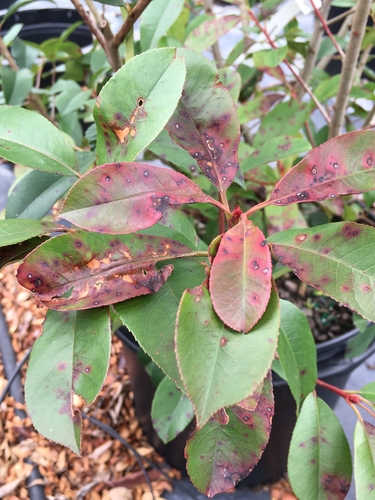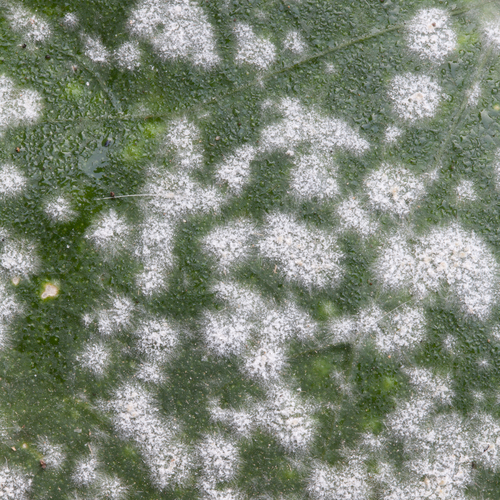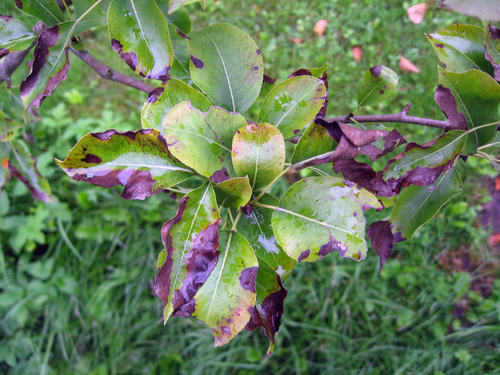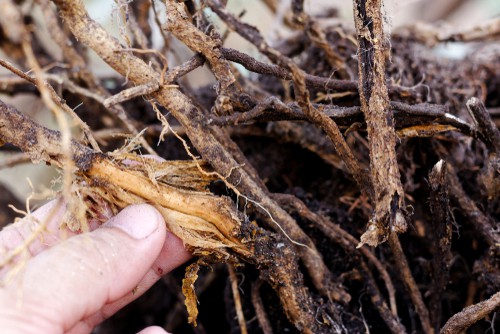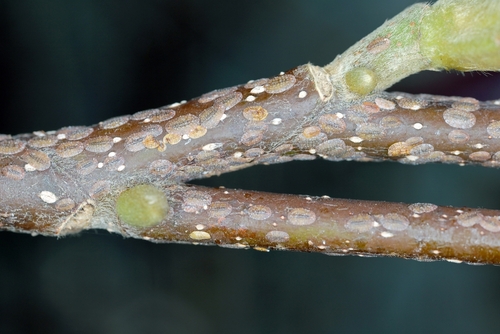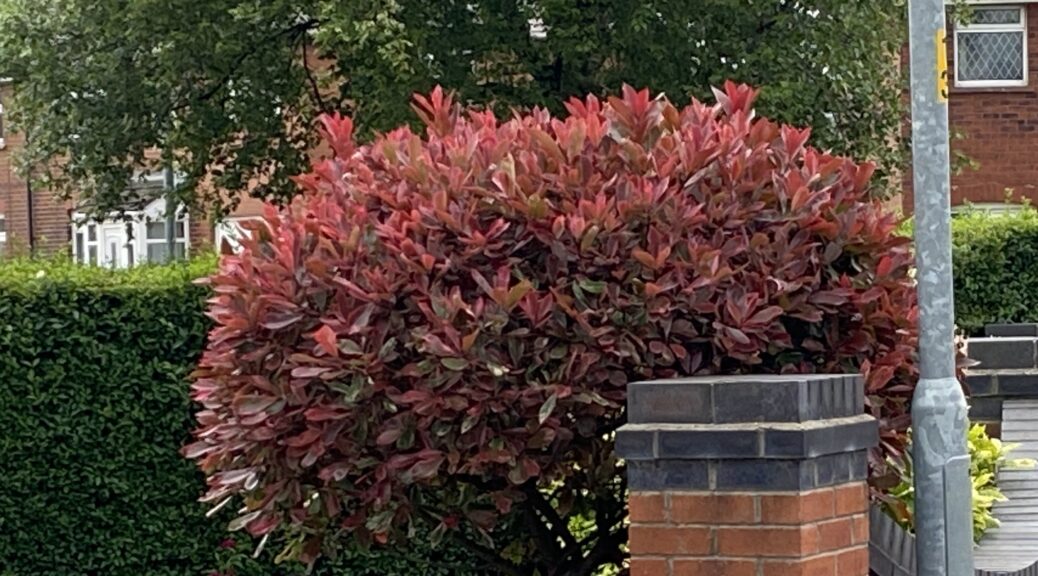
Photinia pests and diseases
Our site is reader supported, this means we may earn a small commission from Amazon and other affiliates when you buy through links on our site.
Photinia pests and diseases aren’t of great concern as these are strong and hardy shrubs that overall, don’t seem to suffer too much apart from when it comes to black spots on the leaves which I covered in detail in this article. I have also covered problems with yellowing leaves and dropping leaves in my guide here.
In this guide, I cover some other pests and diseases that are attracted to photinia’s and discuss what to do about these photinia problems.
Leaf spot
Black or red spots on the leaves of your photinia plant indicate that it probably has leaf spot. This is by far the most common photinia disease by a long way. The affected leaves will fall off after they discolour. It the disease becomes widespread, the plant can start to look bare. Losing the leaves might not be because of the disease itself, but due to the damp and humid conditions in which the disease flourishes.
What to do
If you notice leaf spot, a fungal disease that is not too bad and its only spread to a few leaves, remove the few leaves that are already infected. Make sure to burn these leaves and do not place them in your compost bin. Leaf spot spreads easily to other foliage. I always give them a spray with a general fungicide which seems to help slow it down.
For more severely affected plants, prune back the plant quite aggressively in the middle of May. This gives the photinia the whole growing season to recover. Additionally, recognise that it’s the growing environment that’s encouraging the disease to happen so look at moving it to a sunny but sheltered position in well drained soil.
Just remember that leaf spot, while unsightly, won’t kill you photinia.
Honey fungus
Honey fungus is another fungal disease, but this one spreads underground via the root systems of plants. You will notice white fungus growing around ground level and sometimes underneath the bark. The fungus may look like mushrooms in the autumn. It’s difficult to spot when it’s under the bark.
You can verify that this is the disease that your photinia has by gently uncovering some of the roots. If the white fungus is there, that indicates honey fungus. This is especially the case if surrounding plants also have this problem.
What to do
There’s no treatment for this disease. You have to accept that your photinia, and any other surrounding plants that have this problem, have reached the end of their lives. Dig them up and burn them. the last thing you want it it spreading to near by plants.
Powdery mildew
Powdery mildew is yet another fungal infection. It affects many plants, including photinia. Look for a white powdery substance on leaves and buds. Left to itself, this mildew causes the leaves to discolour and fall off. It’s not too serious but it can cause plants to look sickly.
What to do
Remove the diseased leaves and buds from the plant. Make sure the shrub is getting enough air by pruning some of the interior branches to increase air circulation. And use mulch at 30cm from the tree trunk to cut down the spread of the spores.
As powdery mildew is such a common disease, there are copper and sulphur fungicides for its treatment. I have a few plants that are prone to diseases so I usually spray them with a fungicide a few times a year starting on spring to help prevent mildew and blackspot.
Fire blight
In the late spring, you may notice some boil-like nodules on your plant. These secrete a brown liquid that makes it look like the plant has been scorched by fire, hence the name. I first saw this on Pyracantha plants but it can also affect Photinia. Personally, I have not had this myself.
What to do
There are no chemicals that can address this problem. For small infections of fire blight, remove the infected parts carefully pruning them out to a good healthy section of wood. Then burn them. For more severe infections, all you can do is to dig up the plant and burn the whole thing.
Root rot
Another disease you may be familiar with from other plants is root rot. This infection rot results in the roots of the plant changing colour, leaves wilting and the stems and branches dying. It’s caused by an overly wet soil that probably has become waterlogged. Root rot is a fungas that spreads so it’s important to find it early in its life.
What to do
You can buy chemicals for addressing this problem. The first thing to do is to uncover the roots and dry them out. Then address the cause of the problem – wet soil. Add compost or loam to the soil around the plant so that it can drain better. Even mix in some horticultural grit into the soil. If your photinia is in a pot, repot the plant with a new compost or soil mix and make sure there are holes in the pot and that the holes are covered with broken crockery to help prevent them from becoming clogged up. Usually, root can be easily prevented by just having well-drained soil so preparation before planting is key.
Mites
Mites are pretty much a given for many plants. They suck the sap from the leaves, discolouring them and taking out nutrients. You probably won’t see the mites themselves; it’s easier to notice the webs they leave behind. Mites are not very harmful except for very bad infestations.
What to do
Spray some neem oil or horticultural oil on the leaves. This is a solution to the problem that doesn’t put chemicals into the soil. You can also use pesticides if you prefer but I try to avoid this.
Scale insects
Another insect that gets around to many plants is the scale insect. By sucking the sap of your photinia leaves, these insects cause the leaves to discolour and the stems to die back. Your plant enters a period of general ill-health. This could go on until your plant is beyond recovery.
Plus, scale insects leave behind a sticky, sweet substance called honeydew. This tastes good to ants and aphids who will come to your plant to feast on it. Potentially, this can cause more damage.
What to do
For an ecological solution, introduce lacewings or ladybugs/ladybirds to the area around your photinia. You can get these from Amazon or plant beneficial plants. These are the natural predators of scale insects. Another solution is to use insecticides to kill the insects but they often need 2 applications as the waxy shells of scale insects seems to have resistance to sprays.
European fruit-tip moth
This moth also goes by the name ‘oriental fruit moth’. Photinia is only one of a number of plants that suffer due to this insect. The larva of this insect lives on new plant shoots which results in the plant’s leaves dropping.
What to do
Chemical solutions that include the ingredients spinosyn or esenvalerate help control the populations of these larvae. For a biological fix, introduce the bracnoid wasp to your garden ecosystem.
